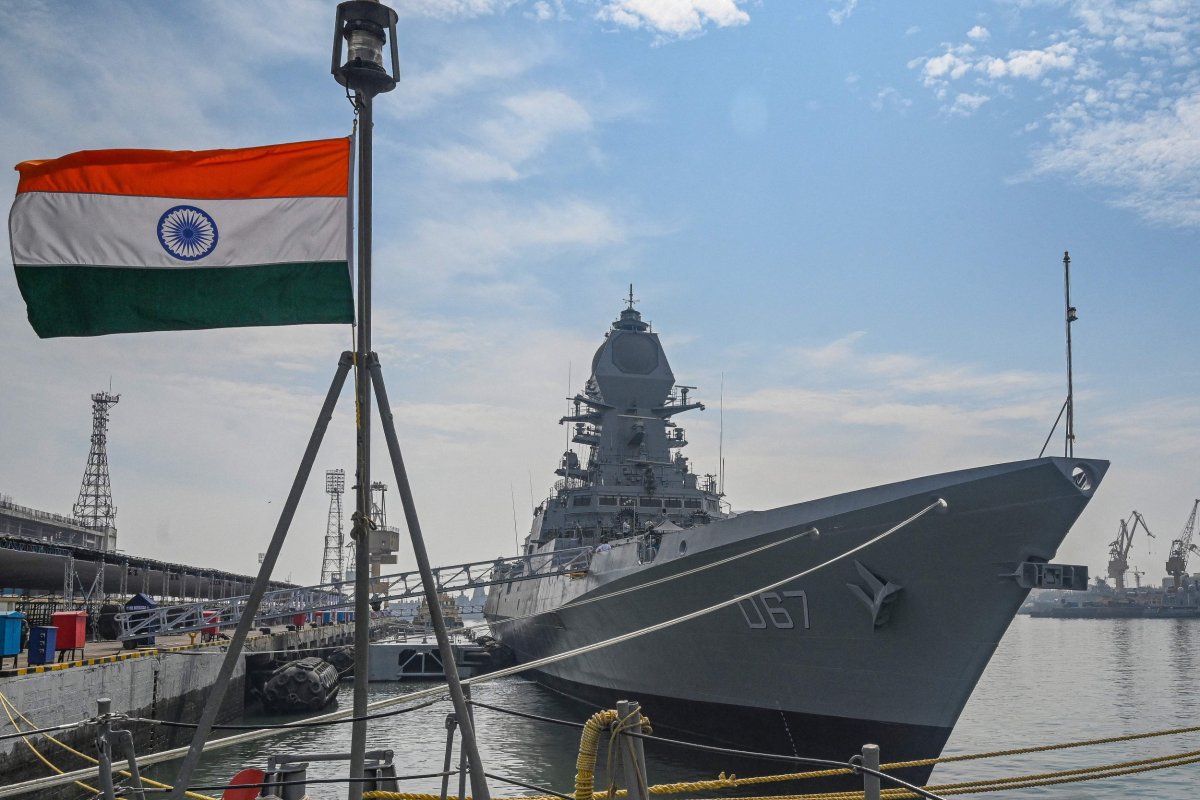India’s navy chief chided China this week for its aggressive behavior in the South China Sea in rare blunt remarks that hinted at New Delhi’s growing concern over the safety of vital sea lines.
“The fragile security situation in the South China Sea, where the growing number of instances of bullying of smaller navies, including fishermen, by the Chinese militia or its navy…poses a clear and present danger to the good order and discipline at sea,” said Adm. Hari Kumar, the Indian Navy’s top uniformed officer.
Kumar was speaking at a public event organized by the National Maritime Foundation, a government-funded think tank, in New Delhi, where he also alluded to the Chinese navy’s frequenting of the Indian Ocean.
“Owing to the increased presence of multinational forces and differing interpretations of international laws, there is this fear that the region’s global commons can change to contested seas,” Kumar said.
India traditionally has kept its distance from long-running territorial disputes in the South China Sea because of a tacit understanding with China about India’s sphere of influence in the Indian Ocean.
“If India were to maintain a distance from the South China Sea—a space Beijing considers a strategic backyard—chances are Beijing will respect India’s sphere of influence in the Indian Ocean,” Abhijit Singh, a senior fellow at the Observer Research Foundation (ORF) think tank in New Delhi, wrote in a July opinion piece for Australia’s Lowy Institute think tank.
But China‘s assertive posture in the Indian Ocean, especially through naval missions close to Sri Lanka, has made India reconsider its stance on South China Sea engagement. Beijing and New Delhi’s differences on their shared border also have drawn the latter closer to the West.
Perhaps most important, however, are India’s economic interests throughout East and Southeast Asia—connected largely by maritime trade routes—which has grown significantly in the past few years.
“India has wider stakes in the South China Sea as nearly 55 percent of India’s trade with the Indo-Pacific region passes through these waters.” Harsh Pant, an ORF senior researcher, observed in 2021.

The Indian Navy’s activity in the region included the August 2021 deployment of four ships, including a guided-missile destroyer and a missile frigate, to Southeast Asia.
India also is a regular member of the recently expanded Quad group with the United States, Japan and Australia, which China has likened to a Cold War-era “clique.” Quad members together hold the annual Malabar naval exercise, which takes place in seas across the Indo-Pacific region.
“The deployment of the Indian Navy ships seeks to underscore the operational reach, peaceful presence and solidarity with friendly countries towards ensuring good order in the maritime domain,” New Delhi said in 2021.
A more direct signal to China is India’s budding defense relationship with the Philippines, which has found itself in the firing line of Beijing’s sweeping maritime claims in the energy-rich South China Sea.
Under a January 2022 deal, New Delhi will provide Manila with its indigenously developed BrahMos anti-ship supersonic cruise missiles. The arms acquisition was an attempt by the Philippines—a U.S. treaty ally—to deter China’s coercion.
BrahMos missiles would “beef up” the Philippine Navy’s firepower and provide Manila with counterattack capabilities in the South China Sea, then Philippine Defense Secretary Delfin Lorenzana said of the agreement.
Source : Newsweek


